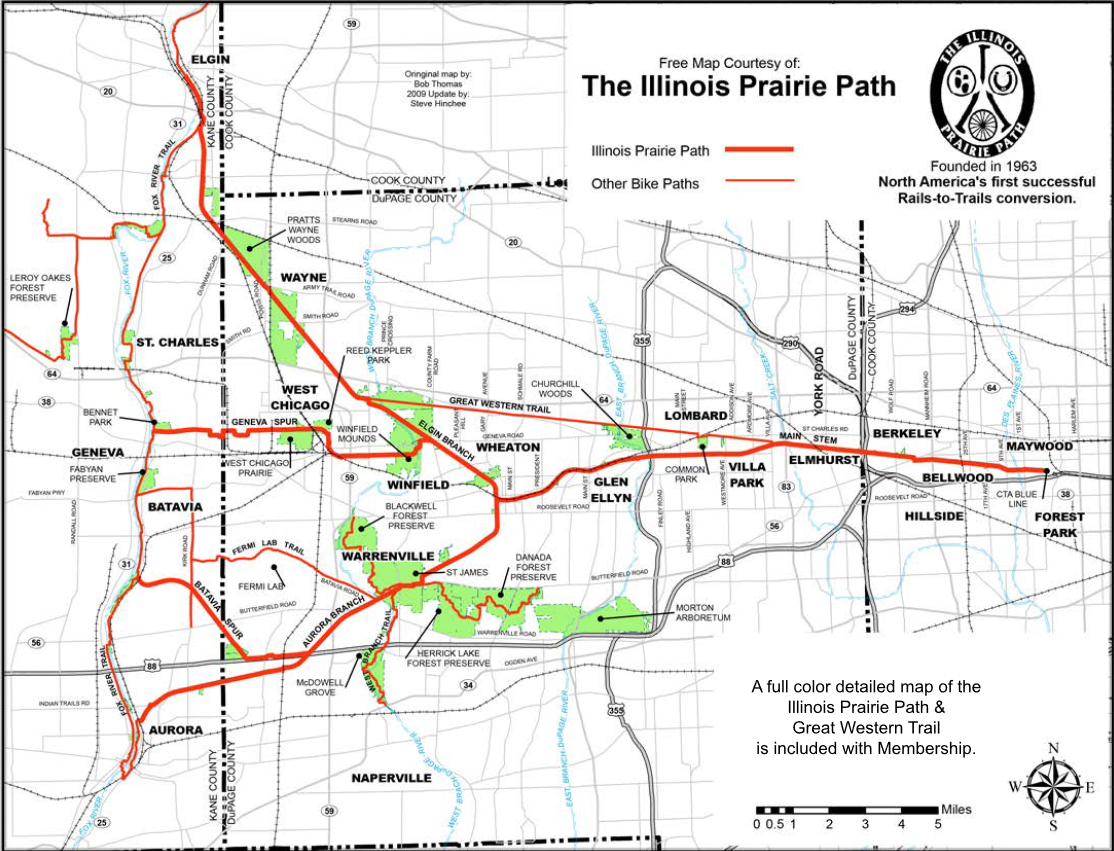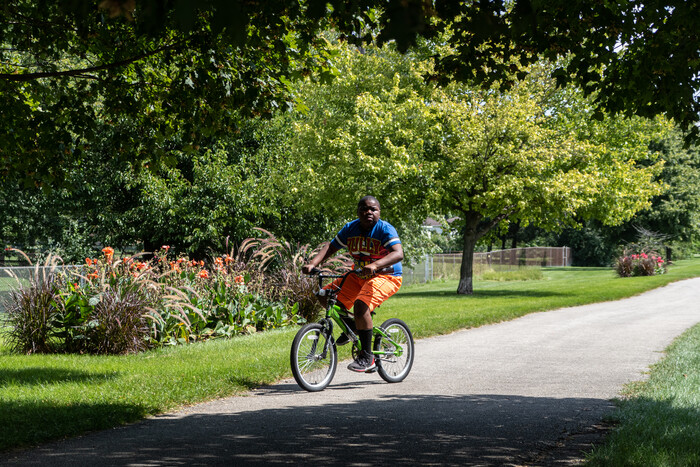Since its inception in the 1960s, Illinois Prairie Path has woven itself through DuPage, Kane, and Cook Counties. As one of the nation’s pioneering rail trail projects, this 61-mile trail network offers plenty for Chicagoland residents to be proud of.
From the beginning and continuing on to this day, advocacy and collaboration have been crucial to the success of this trail that serves as the centerpiece for Chicagoland rail trails.
In 1963, May Watts of the Morton Arboretum sent a letter to the editor of the Chicago Tribune, calling for the conversion of the abandoned Chicago, Aurora and Elgin Railroad into a nature trail for future generations.
Watts spent several years working with volunteers and stakeholders to build awareness and support for the Illinois Prairie Path, which became one of the first rails-to-trails project in the North America.
“It served as a blueprint for so many other rails to trails conversion,” said Ken McClurg, director of the Illinois Prairie Path Corporation, a membership-based nonprofit that advocates to preserve and enhance the Illinois Prairie Path. “So, we’re proud of that.”
While DuPage County owns and oversees the Illinois Prairie Path, the IPPc works with the county and other stakeholders to maintain and improve the trail. For example, IPPc is working with DuDOT and Highways and Illinois Department of Transportation to extend the Illinois Prairie Path east from the trailhead at First Avenue in Maywood to the CTA Des Plaines Avenue Blue Line station.

Closing the gaps will improve connectivity and safety, according to McClurg. The project includes building crossings at arterial roads, improving trail connections between suburbs, enhancing access to mass transit, and creating off-street bike paths and on-street bike lanes to increase bicycling ridership. The project received its initial funding to move forward.
Other IPPc projects include collaborating with IDOT to reroute a section of the Illinois Prairie Path in Hillside and Bellwood to enhance safety of the trail there and participating in the development of the DuPage County and Kane County trail plans.
In addition, the IPPc is working with the Village of Bellwood to beautify the trail with a mural and plant a Miyawaki Forest, a special type of forest that grows quickly and produces dense trees. And the group has been working to add amenities to the trail, including installing a milemarker post at the Warrenville trailhead and educational signs about plants on the trail in Maywood.
The IPPc is also working with the Friends of the East Branch DuPage River Trail to help the group secure the support it needs to build the East Branch DuPage River Trail, which will provide connectivity to the Illinois Prairie Path. “We’d like nothing more than to see that trail go in,” McClurg said. “So we partner with Ginger and the rest of her team as much as we can.”
“We can’t do much without having partners,” McClurg added. “We have partners with the counties, municipalities, corporations, the media, small businesses, and like-minded not-for-profits. … We promote the activities of our partners, especially obviously if it’s something that’s going to be of interest to Prairie Path users. That’s the criteria we use.”
During a recent webinar hosted by Active Transportation Alliance, advocates for several west suburban trails shared how communication, collaboration, resourcefulness, and tenacity have been key to successfully advocating for the creation, expansion and maintenance of these trails. This blog post was drawn from the webinar.

